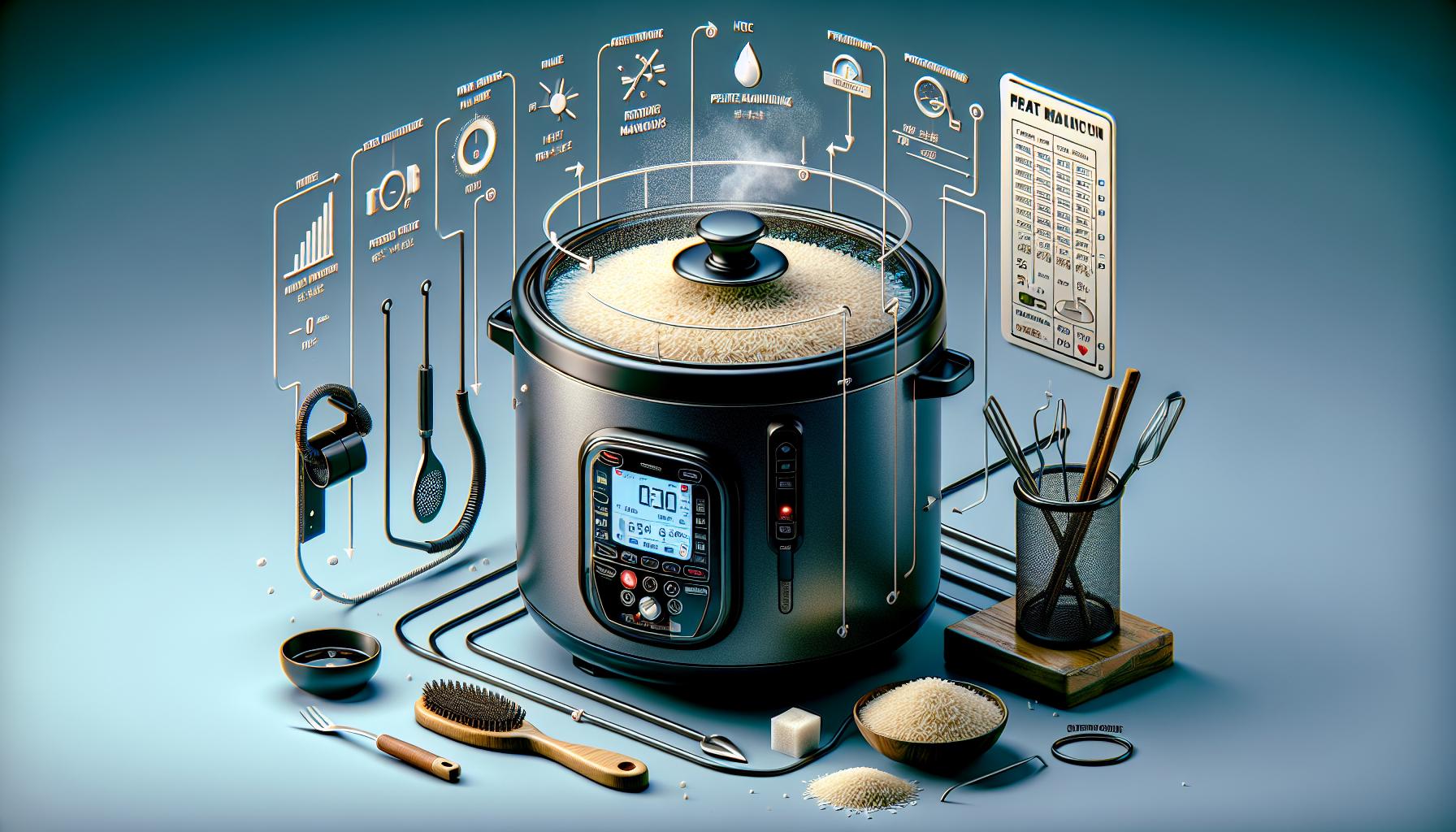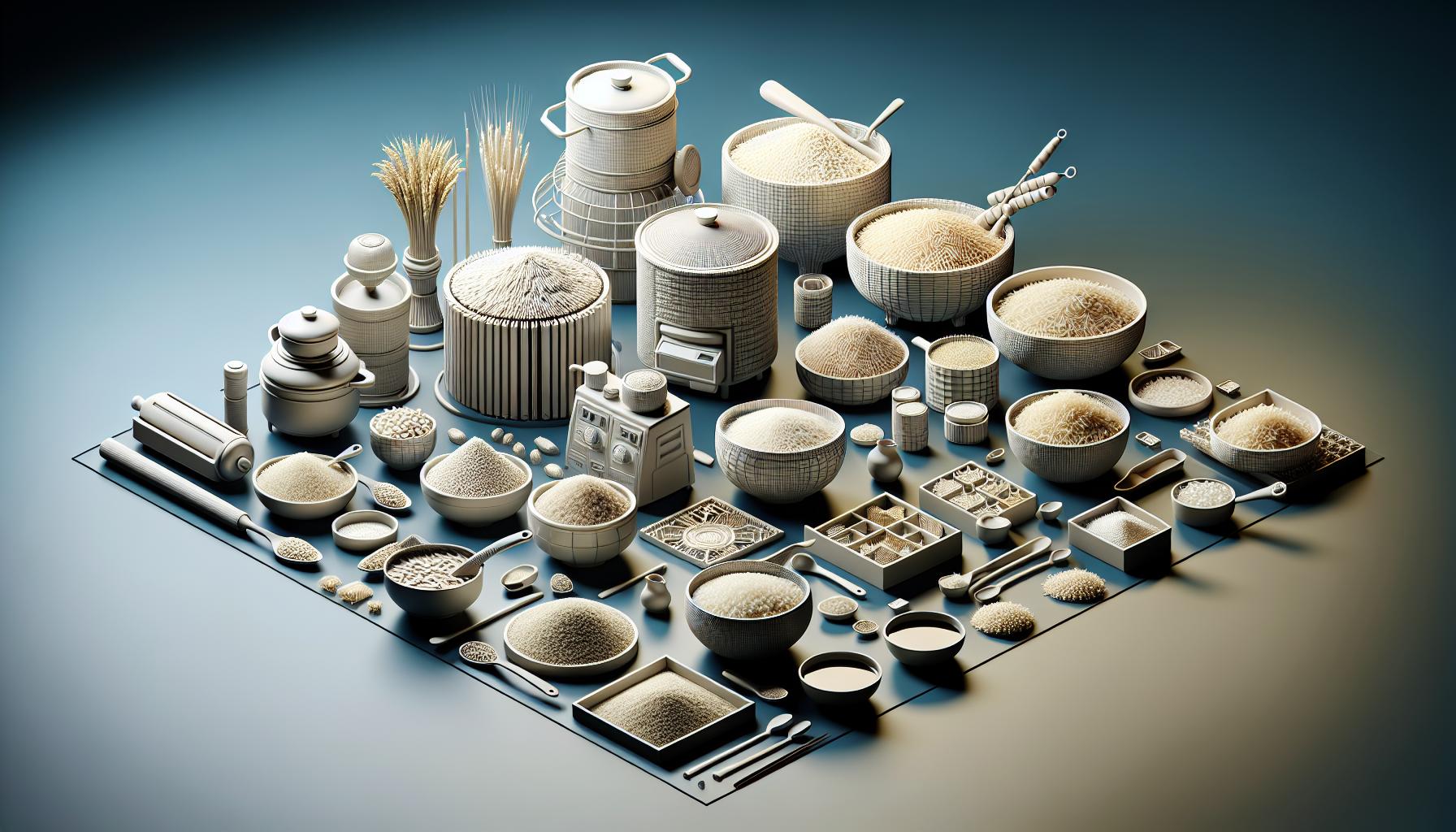Ever wondered if your trusty rice cooker is supposed to bubble while doing its thing? You’re not alone. We’ve all been there, questioning whether that bubbling is a sign of trouble or simply part of the rice cooking process. Let’s dive into the bubbling mystery and uncover the truth behind this common kitchen occurrence.
When it comes to rice cookers and bubbling, there’s a fine line between normal operation and potential issues. Understanding why rice cookers bubble can help us ensure our appliance is working as intended. So, buckle up as we explore the bubbling phenomenon and shed light on whether your rice cooker’s bubbles are a cause for concern or simply a natural part of the rice cooking journey.
The Science Behind Rice Cooking
Cooking rice is a delicate process that involves a perfect balance of water absorption and heat application, resulting in fluffy, perfectly cooked grains. Let’s delve into the science behind rice cooking to better grasp how rice cookers work and why bubbling can occur during the process.
Water Absorption and Steam Formation
- Rice grains have tiny pores that absorb water as they cook, gradually softening and expanding.
- Heating elements in the rice cooker start converting the water into steam once the water reaches its boiling point.
- Steam plays a crucial role in cooking the rice evenly and ensuring a fluffy texture.
Temperature Regulation
- Rice cookers are designed to monitor and regulate temperature throughout the cooking cycle.
- Adjustable settings allow users to control the cooking process based on the type of rice being prepared.
- Consistent temperature is maintained to ensure optimal rice cooking results.
Starch Gelatinization
- Starch molecules in rice granules undergo a process called gelatinization when heated in water.
- Gelatinization transforms the starches into a gel-like substance, contributing to the rice’s texture and stickiness.
- Proper gelatinization is essential for achieving that desirable fluffy and moist rice consistency.
Steam Pressure Release
- Bubbling in rice cookers typically occurs when steam builds up and escapes through the lid’s vent.
- Continuous bubbling can indicate that the rice is cooking well and the steam pressure is effectively released.
- Monitoring bubbling can help ensure that the rice is cooking properly without excessive moisture loss.
My Final Thoughts of the Science
Understanding the intricate science behind rice cooking can empower us to make the most of our rice cookers and create delicious, perfectly cooked rice dishes. By grasping how water absorption, temperature regulation, starch gelatinization, and steam pressure play vital roles in the cooking process, we can achieve consistent and satisfying results every time we cook rice.
Causes of Bubbling in Rice Cookers

When wondering about the bubbling phenomenon in rice cookers, it’s crucial to understand the various factors contributing to this occurrence. Let’s delve into the reasons behind bubbling in rice cookers:
For Beginners: Getting Started
- Water Level: Ensure the correct water-to-rice ratio to avoid excessive bubbling.
- Rice Quality: Choose high-quality rice to minimize bubbling issues.
- Temperature Control: Start with basic settings to familiarize yourself with your rice cooker’s performance.
For Intermediate Users: Enhancing Your Knowledge
- Steam Release: Adjust the steam release valve to regulate bubbling during cooking.
- Stirring: Experiment with stirring techniques to reduce bubbling without affecting cooking quality.
- Pre-Washing: Rinse the rice thoroughly before cooking to prevent excess starch buildup and bubbling.
- Maintenance: Regularly clean your rice cooker to prevent blockages that may lead to bubbling.
- Alternate Methods: Explore different cooking methods like soaking rice beforehand to control bubbling.
- Adjusting Heat: Fine-tune heat settings to achieve optimal cooking results with minimal bubbling.
Understanding the causes of bubbling in rice cookers equips us to troubleshoot effectively and achieve perfectly cooked rice dishes.
Normal vs. Abnormal Bubbling
When it comes to bubbling in rice cookers, understanding the difference between normal and abnormal bubbling is essential in achieving perfectly cooked rice. Let’s delve into the details to help you troubleshoot effectively based on the bubbling behavior.
For Beginners: Recognizing Normal Bubbling
- Regular Pattern: Normal bubbling in a rice cooker typically follows a consistent and rhythmic pattern during the cooking process.
- Small Bubbles: The bubbles produced are usually small or medium-sized, indicating proper cooking and steam release.
- Uniform Distribution: The bubbling is evenly spread across the surface of the rice cooker, ensuring thorough cooking.
For Intermediate Cooks: Signs of Abnormal Bubbling
- Excessive Foaming: Abnormal bubbling may involve excessive foam on the surface of the rice cooker, indicating a potential issue with ingredients or water levels.
- Violent or Erratic Bubbling: If the bubbling becomes violent or erratic, it could signify underlying problems with temperature control or cooking settings.
- Delayed or No Bubbling: In some cases, the absence of bubbling or delayed bubbling might signal issues with the rice cooker’s functionality or maintenance requirements.
- Adjust Water Levels: Ensure the correct water-to-rice ratio to prevent excessive foaming.
- Check Ingredients: Use high-quality rice and fresh ingredients to avoid irregular bubbling patterns.
- Inspect Temperature Settings: Fine-tune the temperature control of the rice cooker to prevent violent bubbling.
- Maintenance: Regularly clean and maintain your rice cooker to prevent issues like delayed or no bubbling.
Understanding the nuances between normal and abnormal bubbling empowers you to take proactive steps in managing your rice cooker effectively, leading to consistently delicious rice dishes.
| Key Points |
|---|
| Normal bubbling is characterized by a regular pattern, small bubbles, and uniform distribution. |
| Abnormal bubbling may display excessive foaming, violent or erratic bubbling, and delayed or no bubbling. |
| Troubleshooting abnormal bubbling involves adjusting water levels, checking ingredients, inspecting temperature settings, and prioritizing maintenance. |
Troubleshooting Bubbling Issues
For Beginners: Understanding the Basics
- Ensure proper water measurement.
- Check for excess foam or bubbling during the cooking process.
- Avoid opening the lid frequently.
- Follow the manufacturer’s instructions for rice to water ratios.
- Use the correct rice setting if available on your cooker.
For Intermediate Users: Managing Abnormal Bubbling
- Adjust water levels if bubbling is excessive.
- Check and rinse rice before cooking.
- Verify temperature settings during the cooking process.
- Regularly clean and maintain your rice cooker.
- Consider changing the cooking method if issues persist.
- Calibrate temperature settings to prevent bubbling issues.
- Implement pre-soaking techniques for certain rice varieties.
- Consider the quality of water used for cooking.
- Experiment with different rice brands to find the best match.
- Consult professional services for technical inspections if problems persist.
| Fact | Data |
|---|---|
| Proper water ratio | 1:1.5 (rice to water) for most rice types |
| Ideal rice texture | Fluffy and separate grains |
| Recommended maintenance | Every 2-3 uses for optimal performance |
Tips for Optimal Rice Cooking

For Beginners: Mastering the Basics
- Proper water measurement: Use the rice cooker’s measuring cup to ensure the right water-to-rice ratio.
- Monitoring for excess foam: Keep an eye on the rice cooker during the cooking process to prevent overflow.
- Minimizing lid opening: Avoid opening the lid frequently as it disrupts the cooking cycle.
- Following manufacturer instructions: Read the manual to understand the specific settings and features of your rice cooker.
- Using the correct rice setting: Select the appropriate setting based on the type of rice you are cooking.
For Intermediate Cooks: Enhancing Your Dish
- Adjust water levels: Fine-tune the amount of water based on the desired rice texture.
- Rinse rice: Wash the rice before cooking to remove excess starch for fluffier results.
- Check temperature settings: Ensure that the temperature is optimal for thorough and even cooking.
- Maintain the cooker: Regularly clean and upkeep your rice cooker to prolong its lifespan and efficiency.
- Consider changing the cooking method: Experiment with different techniques if you’re not satisfied with the results.
- Calibrating temperature settings: Use a thermometer to precisely control the cooking temperature.
- Pre-soaking rice: Soaking the rice before cooking can improve texture and reduce cooking time.
- Assess water quality: Use filtered water for better tasting rice and to avoid impurities.
- Trying different rice brands: Explore a variety of rice brands to find the one that suits your preferences.
- Seeking professional help: Consult with chef or rice cooking experts if you encounter persistent issues for expert advice.
| Recommendations for Optimal Rice Cooking |
|---|
| Water measurement: Use rice cooker cup. |
| Check temperature settings: Ensure even cooking. |
| Wash rice: Remove excess starch for fluffier rice. |
| Calibrate temperature: Control cooking precision. |
We provide a range of tips tailored to different experience levels, helping you achieve perfectly cooked rice every time.
Conclusion
Mastering the art of cooking rice with a rice cooker involves a blend of precision and technique. By adhering to key practices such as accurate water measurement, temperature control, and proper rice washing, we can elevate our rice dishes to new heights. Whether you’re a novice or a seasoned cook, implementing these tips can lead to consistently delicious results. Remember, small adjustments in water levels, maintenance routines, and rice selection can make a significant difference in the outcome. With a bit of experimentation and attention to detail, we can ensure that our rice cookers bubble with success every time. Happy cooking!


